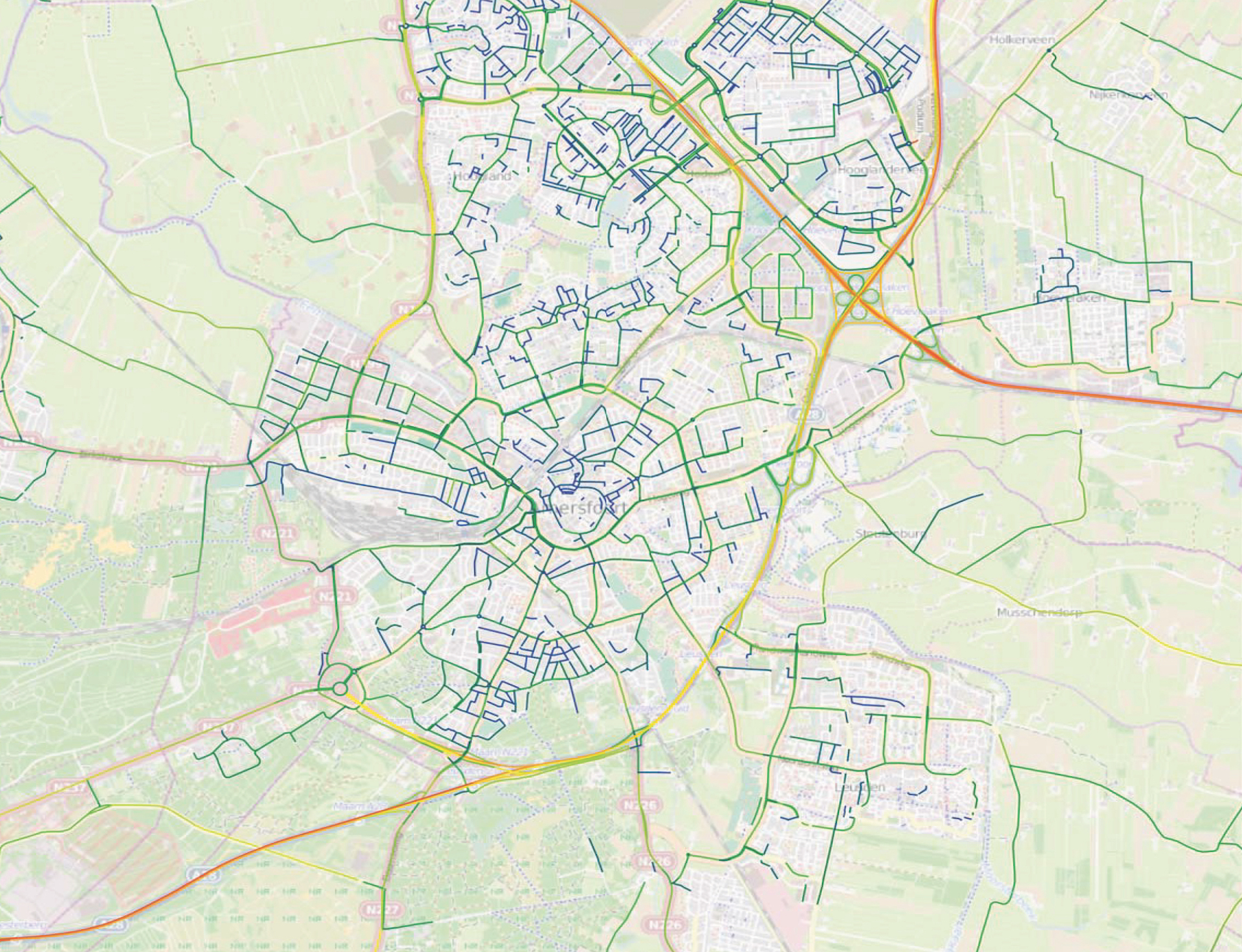Karl van Winden
Geomatics

Automatically deriving and updating attribute road data from movement trajectories
There are many applications that use maps, and more detailed the maps are, more applications can benefit from the map. Many maps are still manually created and also the underlying attributes are informed in a manual process. This thesis presents a method to automatically derive and update attribute road data by mining and analyzing movement trajectories.
The method used for this thesis implemented OpenStreetMap as the underlying map which will be updated. GPS tracks are the movement trajectories that will be used to derive the information for the road attributes. There are attributes that are already conceptually present in OpenStreetMap but are in practice rarely filled. The attributes that will be investigated to derive are: whether the road is a one or two way road, the speed limit of the road, the number of lanes of the road and which vehicles have access to the road. Also, new attributes are introduced in this thesis. These are the average speed of the road, the hours in which the road is congested, the importance of the road and whether the road has a certain geometrical error.
Preprocessing is performed before the attributes can be derived. Important are the classification of the transportation mode of the GPS tracks and the map matching of the GPS points to the roads they are on. When the IDs of the roads, where the GPS points are on, are known the attribute extraction algorithms can be applied. These algorithms all have different methods for deriving their attributes. There are attributes that use the speed of the GPS point, the distance from the point to the road or the heading of the point. For some attributes, a hierarchical code list is created to provide different perspectives on the error of the attributes. The code list consists of the values of the attributes and the hierarchy between these lists describes the level of detail and the granularity of the values.
While some attributes were classified correctly in almost 100\% of the cases, the extraction of the attributes were not all successful. The number of lanes proved to be too difficult to derive out of the available data and the importance of a road relies on a complete coverage of data which was not the case. Although, the latter is applied in this research. The other attributes had different results, the accuracy of the classification of the speed limit was 69,2\%. However, when taking into account speed limits that are only one step away (e.g. 60 km/h instead of the classified 50 km/h) the classification increases to 95\%. The classification of the roads that allow bicycles was 74\% and the attribute to determine whether a road is a one or two way road has a classification accuracy of 99\%.
In the future, the attribute extraction algorithms could be improved or expanded. More detailed levels in the hierarchical code list could be added and constraints could be added to improve the attributes. Also, some techniques might be enhanced for better results. Finally, the ideal application of this method would be deriving and updating the attributes in real-time. This could lead to live maps which would change real-time with the changes on the road.